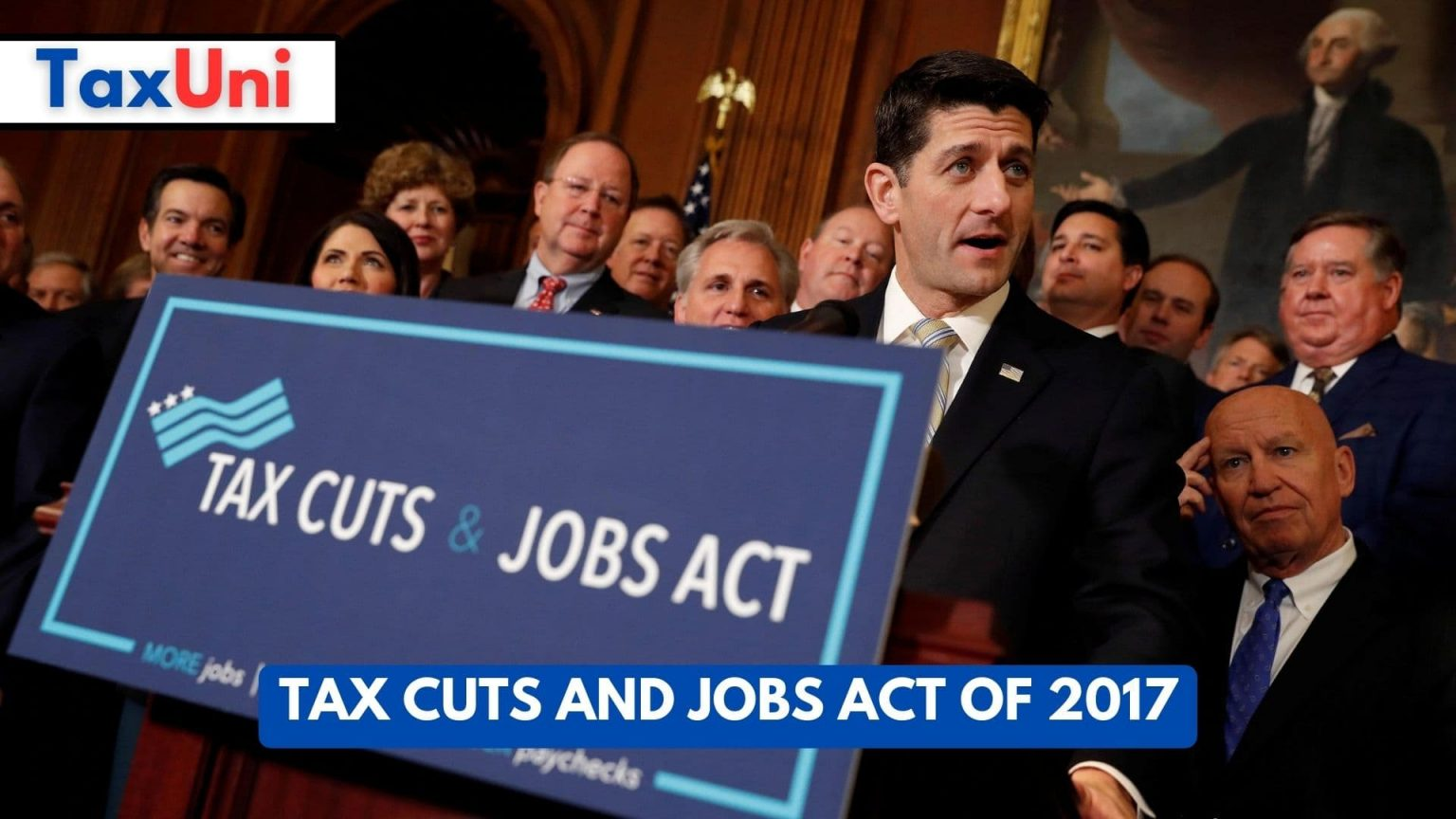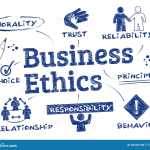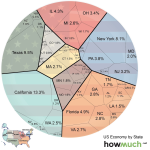The Tax Cuts and Jobs Act (TCJA), enacted in December 2017, marked a significant turning point in U.S. fiscal policy, dramatically altering corporate tax rates and aiming to boost economic growth. This sweeping reform sought to invigorate the economy by reducing the corporate tax rate from 35% to a more competitive 21%, thereby encouraging investments and increasing wages. However, the impact of tax cuts has been a contentious subject for analysis, with various studies, including Gabriel Chodorow-Reich’s recent work, scrutinizing the economic effects of the TCJA. While proponents touted the potential for increased business activity and job creation, critics point to the resultant decline in tax revenue and an uneven distribution of benefits. As the 2025 expiration of key provisions looms, the ongoing debate around the legacy of this 2017 tax reform is more crucial than ever for voters and policymakers alike.
Enacted during a pivotal period in U.S. history, the Tax Cuts and Jobs Act (TCJA) has become a focal point of discussion regarding corporate taxation and fiscal reform. This landmark legislation aimed to stimulate the economy by slashing corporate tax rates and is often compared to previous tax reforms, primarily due to its sweeping changes and significant budget implications. Analysts, including noted economist Gabriel Chodorow-Reich, have meticulously examined the resultant consequences of these tax reductions, especially regarding corporate investments and wage growth. As various components of the law approach expiration, the ongoing evaluation of the 2017 tax overhaul underscores the complexity of tax policy and its broader implications for economic stability. With upcoming elections likely influenced by these discussions, the narrative around corporate tax cuts remains a hot-button issue for voters and legislators alike.
Analyzing the Economic Effects of the TCJA
The Tax Cuts and Jobs Act (TCJA) of 2017 represented one of the most significant shifts in corporate taxation in recent history. This law aimed to lower corporate tax rates from 35% to 21%, a move that proponents argued would stimulate economic growth by increasing business investments and boosting wages. However, the actual economic effects of TCJA, particularly its impact on corporate profit reinvestment, are complex and nuanced. Gabriel Chodorow-Reich, in his recent analysis, sheds light on these effects, highlighting that, while there was a marked increase in capital investments by approximately 11%, the overall longer-term gains in wages and economic growth were not as robust as many had anticipated.
Critics of the TCJA assert that its design favored large corporations over small businesses and failed to deliver the promised economic windfall. Chodorow-Reich’s findings, backed by empirical data, suggest that while tax cuts can enhance corporate investment in the short term, they do not necessarily translate into elevated wages for the workforce. In fact, projected wage increases of $4,000 to $9,000 per employee were significantly overstated, with real gains estimated closer to just $750 annually. This discrepancy highlights the need for a reconsideration of tax policy effectiveness, especially in light of evolving market dynamics.
Corporate Tax Rates: The Ongoing Debate
The debate surrounding corporate tax rates has intensified with the approach of the 2025 expiration of key TCJA provisions. Both Democrats and Republicans have taken opposing stances on whether to raise or further decrease these rates. Advocates for raising corporate tax rates argue that increased revenue is necessary to fund public initiatives and mitigate the budget deficit. Conversely, proponents of maintaining or lowering rates argue that doing so will foster competitive business environments that encourage domestic and foreign investments. The ongoing dialogue centers not only on rates but also on how tax policy can effectively stimulate economic growth and provide equitable returns to taxpayers.
Within this contentious landscape, the insights of experts like Chodorow-Reich play a critical role in informing public opinion and shaping policy decisions. His comprehensive analysis provides evidence that although tax cuts stimulate investments, they may not inherently lead to higher wages or improved economic conditions for all workers. Stakeholders must consider a variety of factors, including the efficiency of tax cuts versus direct investment incentives like immediate expensing, in order to craft solutions that align with both fiscal responsibility and economic growth.
Understanding the Impact of 2017 Tax Reform
The 2017 Tax Reform, primarily embodied by the TCJA, attempts to address an outdated corporate tax framework that had not been significantly overhauled in decades. By lowering tax rates substantially, the law was expected to make U.S. corporations more globally competitive. However, as Gabriel Chodorow-Reich’s findings indicate, the purported benefits of the tax cuts may be undermined by the overall governance of tax policy and investment incentives. In his study, the analysis reveals that favorable investment outcomes were primarily associated with temporary expensing provisions, suggesting that lawmakers might need to rethink tax structures to prioritize sustainable growth.
Moreover, understanding how the TCJA’s provisions affect various economic sectors is crucial for a comprehensive evaluation of its success. The emphasis should not only be on corporate profits but also on how these financial decisions reverberate across the entire economy. Future reforms could benefit from this multidimensional approach, ensuring that tax policy considers the needs of businesses amidst global competition, while also securing improvements in labor costs and consumer purchasing power.
The Dichotomy of Tax Cuts and Revenue Loss
One of the most alarming outcomes of the TCJA was the significant drop in corporate tax revenue after its enactment. Initially, revenue plunged by about 40%, raising concerns over the sustainability of federal funding. This dramatic decrease illustrated the immediate financial implications of cutting corporate tax rates. Yet, interestingly, according to Chodorow-Reich, corporate tax revenue began to rebound in 2020, surpassing expectations as businesses reported profits that exceeded forecasts. This recovery invites a deeper examination of the underlying factors contributing to such resurgent corporate performance.
The observed phenomenon raises questions about how effectively corporate tax policy can be designed to balance incentivizing growth while securing necessary revenue. As companies adapt to evolving market conditions, such as the impact of the pandemic and supply chain shifts, understanding the interplay between tax legislations and corporate profits becomes crucial. Chodorow-Reich’s analysis suggests that higher rates paired with incentivizing measures could offer a feasible compromise, thereby benefitting both the economy and the federal revenue stream.
Investments and Business Behavior Post-TCJA
After the TCJA was enacted, there was an observable uptick in business investments due to the law’s favorable provisions, particularly related to expensing new capital expenditures. Entrepreneurial activity was partially fueled by the immediate write-off benefits, leading to a surge in investments by approximately 11%. However, as highlighted by Chodorow-Reich, there remains a critical examination of whether these investment increases translate to broader economic benefits, particularly in terms of wage growth and overall prosperity for workers.
Understanding the nature of business behavior post-reform requires a close look at what motivates firms to invest. While tax incentives are certainly a factor, they are only one part of the equation. As observed, corporate tax policy can lead to significant adjustments in how firms behave concerning their investment strategies. Furthermore, demystifying these behavioral patterns can aide policymakers in crafting tax incentives that align with desired economic outcomes—ensuring that growth is not just confined to the corporate sector but flows through to employees and communities.
Child Tax Credit: Affected by the Tax Cuts and Jobs Act?
One of the highlights of the Tax Cuts and Jobs Act (TCJA) was its overhaul of the Child Tax Credit, which aimed to provide substantial financial benefits to households with children. As we approach the expiration of various TJCA provisions in 2025, the Child Tax Credit remains under scrutiny. Many families have come to rely on this expanded credit, and its potential renewal or adjustment is crucial for addressing childcare costs, education, and household financial stability.
The conversation around the Child Tax Credit reflects the broader implications of the TCJA on working-class families. While the tax cuts for corporate entities have received substantial advocacy, policymakers must consider the immediate needs of families struggling with rising costs of living. As the economic climate continues to evolve, a balanced approach that includes child tax benefits alongside corporate incentives could yield a more equitable economic environment that supports all sectors of society.
Future Considerations for Corporate Tax Policy
Looking forward, as lawmakers prepare for the post-TCJA landscape, there is a pressing need for a reevaluation of corporate tax policies. With key provisions set to expire, both sides of the political aisle must engage in meaningful discussions to forge an effective path forward. The lessons from the TCJA, as laid out in Chodorow-Reich’s analysis, illuminate the complexities of tax implications and their far-reaching impacts on the economy—suggesting that merely reducing rates does not guarantee favorable economic outcomes.
To move towards a more balanced tax policy, one must prioritize not just reducing rates but also investing in measures that genuinely uplift wage growth and create strong job markets. By learning from past reforms and taking insights from economic analyses, it is possible to design a tax framework that can adapt to changing domestic and global dynamics, ensuring that the benefits of corporate taxation are experienced broadly across the economy.
The Global Context of Corporate Taxation
A crucial element of the discussion around corporate tax rates involves understanding their global context. As noted by Chodorow-Reich, the U.S. once occupied a middle ground in corporate tax rates among wealthy nations, but by 2016, it had risen to the top tier, along with France. This shift prompted a response from both domestic and international stakeholders to rethink tax codes, particularly as other countries began slashing their rates to attract business investments. The challenge, therefore, lies in recalibrating the U.S. corporate tax strategy in response to these global trends.
In adapting to the international landscape, U.S. policymakers must consider how tax rates impact businesses differently. While reducing corporate tax rates may attract foreign investment, it could also lead to diminished tax revenue, prompting the need for a thoughtful approach to both statutory rates and effective tax incentives. Striking the right balance will be key in ensuring that American companies can compete effectively on the world stage while also maintaining essential public services and economic stability.
Lessons Learned from Corporate Tax Returns
Chodorow-Reich’s analysis emphasizes the critical need for ongoing research into corporate tax returns to fully understand the implications of the TCJA. By examining individual returns, economists can obtain nuanced insights into how firms react to different tax policies. This empirical data is invaluable in shaping future tax legislation that effectively aligns corporate behavior with broader economic goals. The findings indicate that while direct tax cuts played a role in increasing investment rates, the long-term efficacy of tax strategies also depends on providing meaningful incentives for companies to promote growth.
Moreover, reviewing corporate tax returns can illuminate patterns that indicate how different sectors respond to tax policy changes. This knowledge can help lawmakers design tax reforms that not only address revenue concerns but also stimulate innovation and promote job creation. Understanding these dynamics is indispensable for developing tax policies that not only draw investment but also provide tangible benefits to the American workforce.
Frequently Asked Questions
What are the major provisions of the Tax Cuts and Jobs Act related to corporate tax rates?
The Tax Cuts and Jobs Act (TCJA), implemented in 2017, permanently reduced the federal corporate tax rate from 35% to 21%. This significant cut aimed to enhance business investments and promote economic growth. Additionally, the TCJA introduced immediate expensing provisions for capital investments, allowing firms to write off their costs entirely in the year they are incurred.
What impact did the Tax Cuts and Jobs Act have on corporate tax revenues?
Following the enactment of the Tax Cuts and Jobs Act, corporate tax revenues initially plummeted by about 40%. However, by 2020, revenues began to recover as corporate profits surged higher than expected, partly due to various economic shifts during the pandemic. This recovery highlighted how certain firms, influenced by the TCJA’s lower tax environment, adapted their profit reporting strategies.
How did the Tax Cuts and Jobs Act affect wage growth according to the Gabriel Chodorow-Reich analysis?
Gabriel Chodorow-Reich’s analysis indicates that while the Tax Cuts and Jobs Act was expected to significantly increase wages, the actual impact was much lower than projected. Instead of the anticipated $4,000 to $9,000 increase per employee, the analysis estimated a raise of approximately $750 per year in 2017 dollars, highlighting the need for a cautious perspective on the TCJA’s overall benefits.
What are the economic effects of the TCJA as noted in recent studies?
Studies, including those by Gabriel Chodorow-Reich and colleagues, suggest that the economic effects of the TCJA included a modest rise in business investments—estimated at around 11%. However, these increases in capital expenditures were primarily tied to the law’s expensing provisions rather than the corporate tax rate cuts, indicating a complex relationship between tax policy and economic activity.
Is there a debate regarding the effectiveness of corporate tax cuts in the Tax Cuts and Jobs Act?
Yes, there is an ongoing debate about the effectiveness of corporate tax cuts as seen in the Tax Cuts and Jobs Act. While proponents argue that lower rates spur business investments and growth, analyses from economists like Gabriel Chodorow-Reich show that these cuts did not fully translate into significant wage increases or adequate revenue, suggesting a more nuanced view of their impact.
What proposals might emerge regarding corporate tax rates in the future due to TCJA’s expiration?
With key provisions of the Tax Cuts and Jobs Act set to expire in 2025, there are discussions around increasing corporate tax rates to generate revenue while possibly reinstating certain beneficial expensing provisions. This would aim to strike a balance between funding government initiatives and promoting economic growth through investments.
| Key Point | Details |
|---|---|
| Expiration of Provisions | Many key provisions of the Tax Cuts and Jobs Act (TCJA) are set to expire in 2025, including the generous Child Tax Credit. |
| Corporate Tax Debate | Political discussions are intensifying, with Democrats advocating for higher corporate taxes and Republicans seeking further reductions to drive economic growth. |
| Impact Analysis | Gabriel Chodorow-Reich’s analysis finds modest benefits from corporate tax cuts, with slight increases in wages and investments, but a significant decrease in tax revenue. |
| Corporate Tax Rates | The TCJA reduced the corporate tax rate from 35% to 21%, expecting a dramatic drop in federal revenue. |
| Incentives for Investment | Provisions allowing immediate expensing of capital investments were more effective in promoting growth than rate cuts. |
| Wage Increases | Estimates of wage growth due to the TCJA have been contentious, with projections far surpassing actual observed increases. |
| Corporate Profit Recovery | Following a steep drop, corporate tax revenues recovered, influenced by unexpected high business profits and the pandemic’s economic impacts. |
Summary
The Tax Cuts and Jobs Act has become a highly contested topic as its key provisions face expiration in 2025. While debates continue regarding corporate tax rates and their effects, analyses highlight that the initial promises of wage growth and increased investment may not materialize as expected. Understanding the TCJA’s impact is essential as voters approach the upcoming tax battle.







